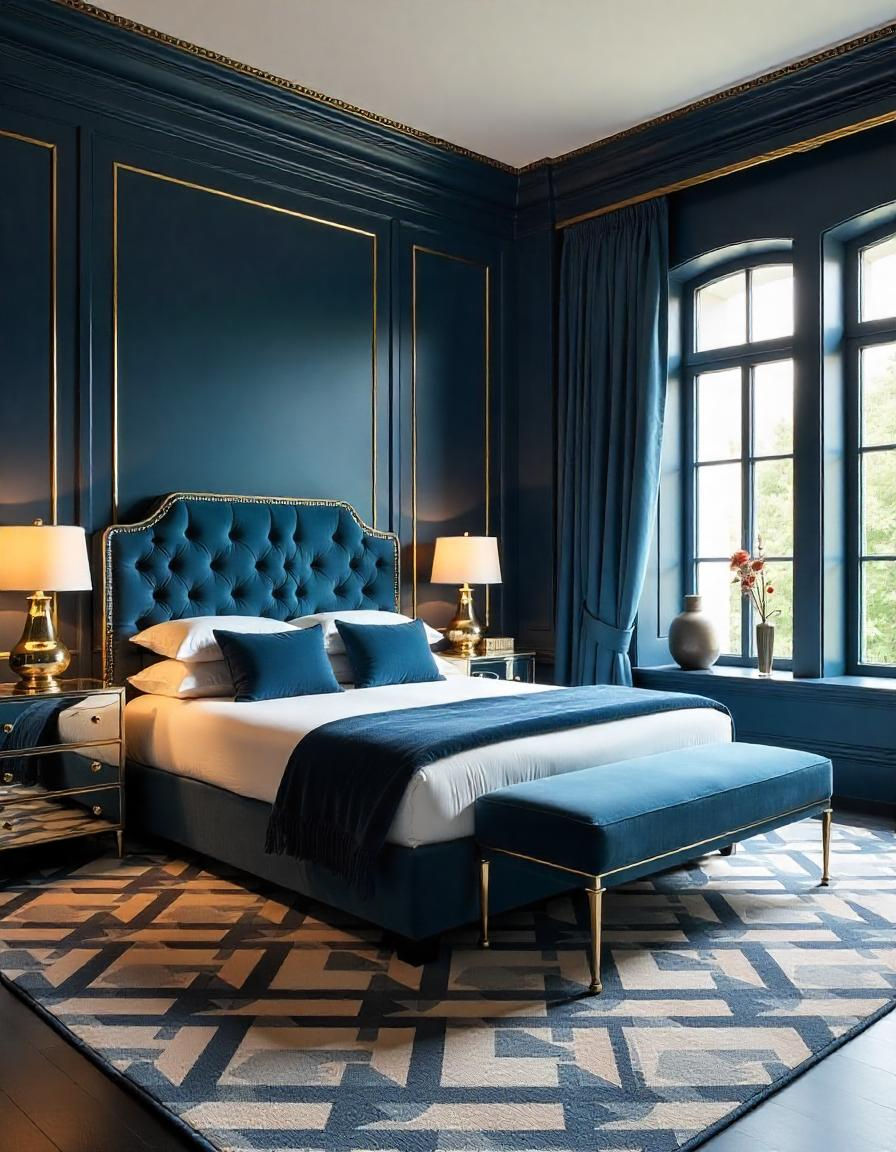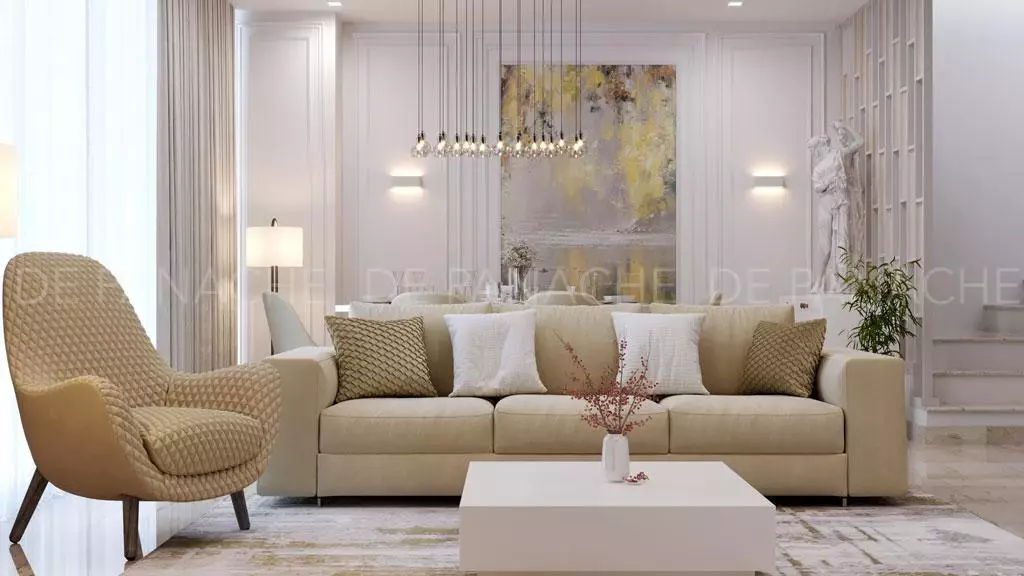Latest Interior Design Trends
The Latest Interior design Trend is a multifaceted field beyond simply decorating a space. It’s a blend of art and science, focused on creating environments that are aesthetically pleasing, functional, safe, and comfortable. Here’s a breakdown of key aspects

Latest Interior Design Trends
Core Concepts:
- Functionality:
- Interior designers consider how a space will be used, optimizing layouts for efficiency and flow.
- This includes space planning, traffic flow, and ensuring accessibility.
- Aesthetics:
- This encompasses the visual appeal of a space, including color palettes, textures, patterns, and overall style.
- Designers work to create a cohesive and harmonious look that reflects the client’s taste and the space’s purpose.
- Safety and Well-being:
- Interior designers are knowledgeable about building codes, safety regulations, and accessibility standards.
- They also consider the impact of design on the occupants’ health and well-being, such as air quality and lighting.
- Sustainability:
- Increasingly, Interior Designers are incorporating sustainable practices, such as using eco-friendly materials and energy-efficient lighting.
Discover The Interior Design . Find inspiration for your home with modern furniture, decor, and innovative space solutions
Navigating the Ever-Evolving Landscape of Interior Design: Embracing the Futur
- The world of design is a dynamic, constantly shifting realm. Design permeates every aspect of our lives, from the sleek interfaces of our digital devices to the intricate architecture that shapes our cities. Staying ahead of the curve, understanding the subtle nuances of evolving aesthetics, and adapting to rapid technological advancement are paramount for any designer or business seeking to make a lasting impact. In this context, grasping the Latest Interior design Trends is not merely a stylistic pursuit but a strategic imperative.
- One of the most significant shifts we’re witnessing is the increasing emphasis on inclusivity and accessibility. Design is no longer a privilege reserved for a select few; it’s a fundamental right. This translates to a focus on user-centered design principles, ensuring that products and services are intuitive and accessible to individuals of all abilities. This trend is further amplified by the growing awareness of diverse cultural backgrounds and perspectives, demanding designs that resonate with a global audience.
- Furthermore, the rise of immersive technologies like augmented reality (AR) and virtual reality (VR) is transforming how we interact with digital content. Designers are tasked with creating experiences that seamlessly blend the physical and digital worlds, pushing the boundaries of creativity and innovation. This requires a deep understanding of spatial design, user interaction, and the psychological impact of immersive environments.
- Sustainability is another driving force shaping the future of design. As environmental concerns become increasingly pressing, designers are adopting eco-conscious practices, prioritizing the use of sustainable materials, and minimizing the environmental footprint of their creations. This extends beyond material selection to encompass the entire lifecycle of a product, from its conception to its disposal. The concept of circular design, which emphasizes reuse and recycling, is gaining traction, reflecting a growing commitment to responsible consumption.
- The digital realm is also witnessing a fascinating evolution. Minimalist design, characterized by clean lines, ample white space, and a focus on essential elements, continues to be a dominant force. However, there’s a growing appetite for expressive and playful design, incorporating bold colors, dynamic typography, and intricate illustrations. This reflects a desire for more engaging and memorable digital experiences.
- The integration of artificial intelligence (AI) into design workflows is also reshaping the creative process. AI-powered tools can assist with tasks such as image generation, layout design, and user interface testing, freeing up designers to focus on more strategic and creative aspects of their work. However, it’s important to recognize that AI is a tool, not a replacement for human creativity and intuition.
- In the realm of branding, authenticity and transparency are paramount. Consumers are increasingly discerning, seeking brands that align with their values and demonstrate a genuine commitment to social responsibility. This translates to a shift away from overly polished and corporate branding towards more authentic and relatable brand identities. Storytelling plays a crucial role in building emotional connections with audiences and fostering loyalty and trust.
- The Latest Interior design Trends also reflects a growing appreciation for craftsmanship and handmade aesthetics. In a world dominated by mass production, there’s a renewed interest in artisanal products and bespoke designs. This latest Interior Design Trend highlights the value of human skill and creativity, celebrating the unique qualities of handcrafted objects.
- Moreover, the line between different Latest Interior Design Trends disciplines is becoming increasingly blurred. Designers are expected to possess a diverse skill set, encompassing visual communication, user experience design, and interaction design. This interdisciplinary approach fosters innovation and allows designers to tackle complex challenges from multiple perspectives.
- In conclusion, The Latest Interior Design Trends landscape is in a state of constant flux, driven by technological advancements, evolving consumer preferences, and a growing awareness of social and environmental issues. By embracing inclusivity, sustainability, and innovation, designers can create meaningful and impactful experiences that shape the future. Staying informed about the latest Interior Design Trends and adapting to the ever-changing landscape is crucial for success in this dynamic field. Designers must remain agile, adaptable, and committed to
Pooja Tiwari’s Space 4 is a beacon of creativity and innovation, reflecting a commitment toPooja Tiwari’s Space 4 inclusivity, sustainability, and cutting-edge design. In today’s rapidly evolving design landscape, Pooja Tiwari’s Space 4 stands out as a testament to the power of staying informed and embracing change. As designers navigate this dynamic field, Pooja Tiwari’s Space 4 serves as an inspiring example of agility, adaptability, and dedication to the latest design trends.

Key Elements of The Latest Interior Design Trends:
- Space Planning:
- Determining the optimal layout of furniture and other elements within a space.
- Color Theory:
- Understanding how colors affect mood and perception, and using color to create desired effects.
- Lighting:
- Designing lighting schemes that provide both functional and ambient light.
- Materials and Textiles:
- Selecting appropriate materials and textiles for flooring, walls, furniture, and window treatments.
- Furniture and Accessories:
- Choosing furniture and accessories that complement the overall design and meet the client’s needs.
- Space Planning:
The Latest Interior Design Trends Process:
- Client Consultation:
- Understanding the client’s needs, preferences, and budget.
- Conceptual Design:
- Developing initial design concepts and presenting them to the client.
- Design Development:
- Refining the design, selecting materials and finishes, and creating detailed plans.
- Implementation:
- Overseeing the installation of the design, including coordinating with contractors and vendors
In essence:
Interior design is about creating spaces that enhance our lives, improving both their functionality and beauty. It’s a profession that requires a blend of creativity, technical knowledge, and strong communication skills.
Greater Noida, Uttar Pradesh, India • Update location
